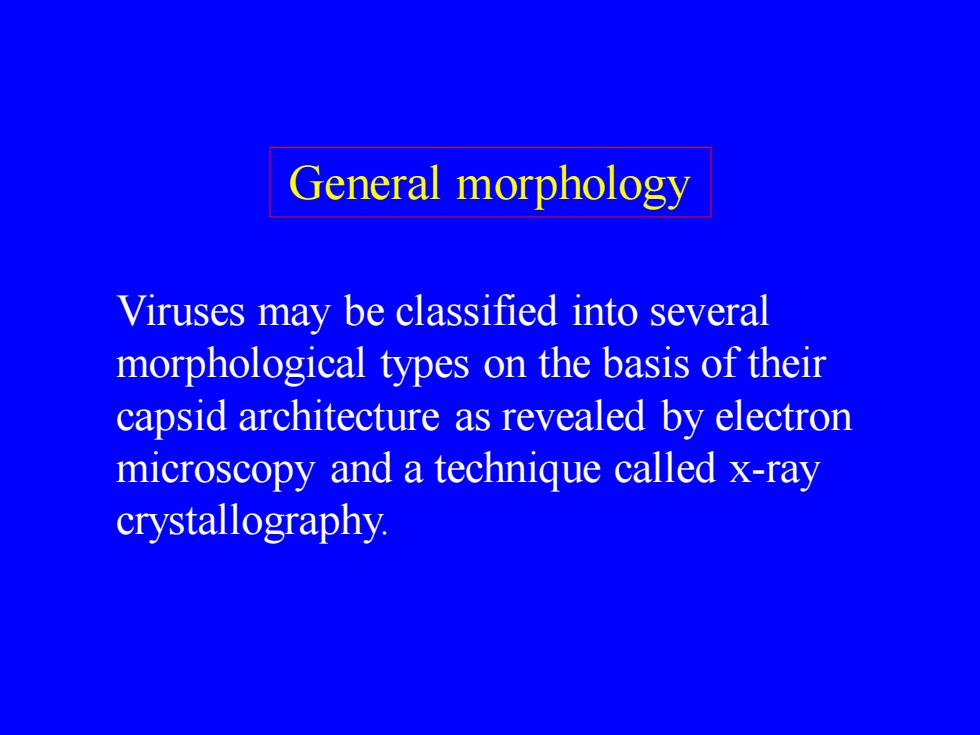
The genomes of viruses can be composed of either DNA or RNA,and some use both as their genomic material at different stages in their life cycle.However only one type of nucleic acid is found in the virion of any particular type of virus
The genomes of viruses can be composed of either DNA or RNA, and some use both as their genomic material at different stages in their life cycle. However , only one type of nucleic acid is found in the virion of any particular type of virus

eck tube sheath ail fiber plate T-even A virus can have either DNA or RNA but never both !
A virus can have either DNA or RNA but never both !!

Structure of viruses Most viruses are too small to be seen under light microscope. All viruses consists of an RNA or DNA core genome surrounded by a protein coat capsid. The combined Envelope Capsomere viral genome and capsid is Nucleic acid called the Capsid (entire nucleocapsid coat) Enveloped virus Naked virus
Structure of viruses • Most viruses are too small to be seen under light microscope. • All viruses consists of an RNA or DNA core genome surrounded by a protein coat capsid. • The combined viral genome and capsid is called the nucleocapsid

Complex viruses Some viruses have complicated structures and are called complex DNA viruses.Examples of complex neck tube viruses are poxviruses,which do sheath not contain clearly identifiable tail fiber capsids but have several coats around the nucleic acid.Certain base plate bacteriophages have capsids to which additional structures are T-even attached
Some viruses have complicated structures and are called complex viruses. Examples of complex viruses are poxviruses, which do not contain clearly identifiable capsids but have several coats around the nucleic acid. Certain bacteriophages have capsids to which additional structures are attached. Complex viruses

General morphology Viruses may be classified into several morphological types on the basis of their capsid architecture as revealed by electron microscopy and a technique called x-ray crystallography
Viruses may be classified into several morphological types on the basis of their capsid architecture as revealed by electron microscopy and a technique called x-ray crystallography. General morphology